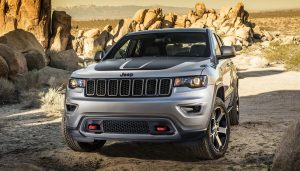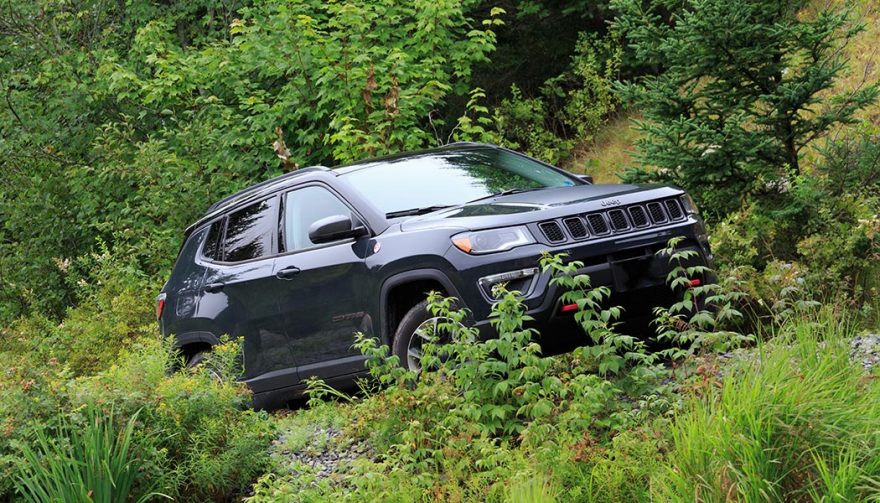
Some people use four-wheel drive and all-wheel drive interchangeably. You might even do it yourself. While it might seem that the two drive setups are just the same, like an engine and a motor, the reality is there are some subtle differences between AWD vs 4WD that few understand.
All Wheel Drive vs Four Wheel Drive: What’s the Difference
Some people use four-wheel drive and all-wheel drive interchangeably. You might even do it yourself. While it might seem that the two drive setups are just the same, like an engine and a motor, the reality is there are some subtle differences between AWD vs 4WD that few understand. This can actually be a pretty controversial topic in some circles. Some people insisting the term “all-wheel drive” is just marketing spin created by automakers to sound sexy or sophisticated. Even mentioning this topic among gearheads can spark an argument, interestingly enough.
The fact is four-wheel drive and all-wheel drive are two different things. Not understanding what sets these two drive systems apart could lead you to expose your ignorance in front of the wrong people. Not only that, but it means you’ll keep believing the wrong things about how the drivetrain on different cars, trucks, and SUVs works.
Read on to learn what makes all-wheel drive and four-wheel drive the same yet different.
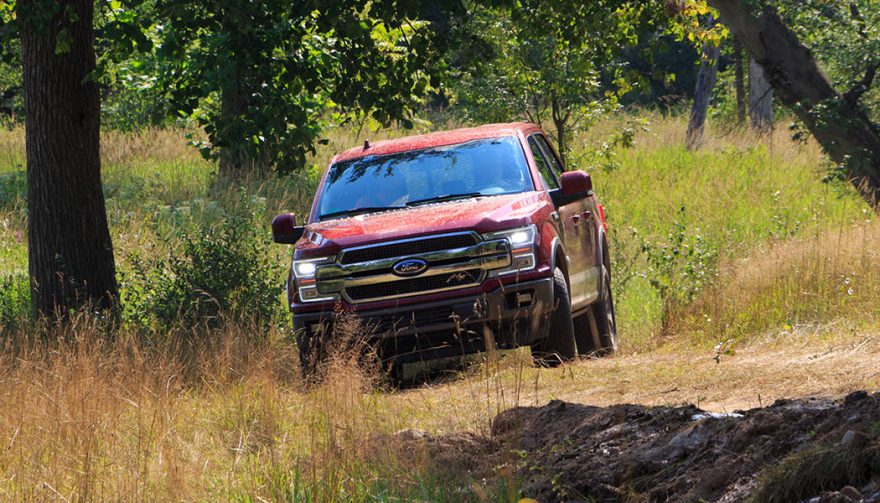
All the Power
Back in the day, cars only had power going to two wheels. It worked well enough. Except on surfaces that were particularly slippery or during heavy rain or snow. Someone had the brilliant idea of having that power divided so it would go to the other set of wheels. Exactly who invented four-wheel drive is an item of debate, but the important thing is that we have it now.
This splitting of the engine’s power proved to be useful for trucks and other vehicles that left the comfort of roads behind. Still, it was something that was mostly installed from the factory only on commercial trucks. World War II required automakers to use four-wheel drive in trucks on a scale never before seen. After the war, consumers had a taste for four-wheel drive on their vehicles. Something that still was pretty much an aftermarket solution in consumer pickups. Seeing an opportunity, automakers like GM decided to start offering four-wheel drive as an option on their new trucks, and shoppers responded favorably.
Like four-wheel drive, all-wheel drive sends power to all four wheels, at least some of the time. If it does the same thing as four-wheel drive, why is it called something different? Is 4WD vs AWD a marketing trick cooked up by the automotive industry or advertising executives in a boardroom? Do you only call it all-wheel drive when it’s for a car and not a truck?
Things get even more confusing when you look at the crossover market. Unlike truck-based SUVs, some unibody or car-based crossovers have shiny “AWD” badges, while others have “4WD” emblazoned on them. Even more perplexing is that the Toyota Highlander has one or the other, depending on the generation. That certainly lends credence to the theory that four-wheel drive and all-wheel drive are essentially interchangeable.
There’s a lot of confusion on the internet about what the differences are with AWD vs 4WD. Some even claim they’re the same thing, that it’s just a matter of semantics. That’s actually not true.
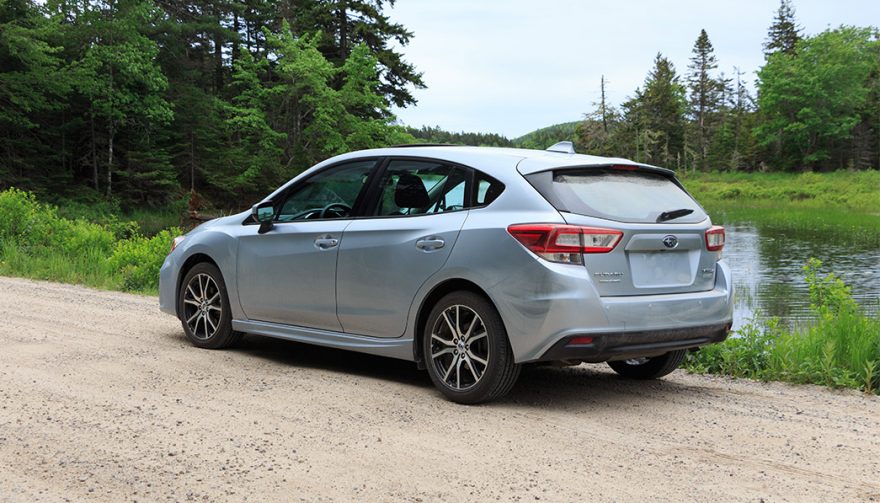
AWD Differences
While all-wheel drive sends power to all four wheels on a vehicle, not all of the systems work the same. We’re not just talking about the mechanical operation of the system, but also when power goes to which wheels.
The range of all-wheel-drive setups on the market is impressive. Most have a front- or rear-wheel bias, meaning the majority or even all the power goes to those wheels most of the time. When the system detects that those primary drive wheels start to slip, like when you’re cornering hard or the road is covered with loose gravel, some of the power is redirected to the other set of wheels to hopefully improve traction and handling. This ability to send power to the other wheels that might have better grip is what makes all-wheel drive great for driving in rain and snow, as well as going on light off-road trails. If you’ve driven an all-wheel-drive car in a big snowstorm, you know what kind of difference the system makes in how the vehicle handles.
For example, Subaru’s symmetrical all-wheel drive has been set up to always send a minimum of 20 percent of the engine’s power to the rear wheels. Other automakers use a rear-wheel bias for the all-wheel drive, which gives the car a sportier feeling for the driver. BMW’s xDrive all-wheel-drive system is set up to send 60 percent of the power to the rear wheels under normal driving conditions. In extreme situations, xDrive can send almost all of the power to the front or rear axle. Some systems are configured to only shift a fraction of the power to one axle or the other. There really is a huge range in functionality.
Some automakers like Chevrolet have an all-wheel-drive system that you engage by pressing a button. The rest of the time the vehicle operates with two-wheel-drive. When the driver decides having all-wheel drive engaged is a good idea, they press the button. The idea is this setup helps save on fuel when extra traction isn’t needed. After all, sending power to two axles consumes more fuel. Of course, all the mechanical equipment for an all-wheel-drive system, as well as a four-wheel-drive setup, also means you’ll be burning more fuel.
There is a downside to systems like that where the driver decides when it’s engaged, because all-wheel drive can really help with emergency maneuvers. Since you don’t know when an emergency will happen, like a car suddenly pulling in front of you or loose gravel on the road where you don’t see it beforehand, not having all-wheel drive could be the difference between avoiding an accident and getting into one.
You could argue all day long about which all-wheel-drive setup is better, and people do. What it really comes down to is preference. Some like the sporty nature of one that has a rear-wheel bias, while others think favoring the front wheels adds stability. The important takeaway is that all-wheel-drive systems aren’t all the same, but their job is to send power to the wheels that hopefully have the most grip.
Rugged 4WD
While you could go down some nicely graded fire roads or even certain deeply rutted trails with all-wheel drive on a car or crossover, to really get off the beaten path and make it back requires four-wheel drive. One of the big contrasts of AWD vs 4WD is this: All-wheel drive can’t handle deep mud, boulders, and super uneven ground. That’s why you typically only see four-wheel-drive systems on trucks and truck-based SUVs that people use to go out in the middle of nowhere.
Basically, four-wheel drive has been designed to handle super tough conditions. Think of it like the sledgehammer, while all-wheel drive is a regular claw hammer. Four-wheel drive is ideal when crawling over rocks, fording water, powering through deep mud, rolling over logs, and negotiating broken-up, uneven ground. Most people will never do these things, but four-wheel drive does help with snow-packed roads or heavy rain.
There are also different types of four-wheel-drive systems, similar to all-wheel drive. In general, four-wheel-drive systems have two sets of gears, high and low. The high gears are good for normal driving in slippery or difficult conditions. As for the low gears, drivers engage them to get through especially tough terrain, like mud and deep snow, or crawling over boulders.
You can get a vehicle with either automatic or part-time four-wheel drive. As the name implies, with an automatic setup power goes to only two wheels in normal driving conditions. This is similar to all-wheel drive, since power is sent to the other set of wheels automatically when wheel slippage has been detected.
Part-time four-wheel drive is something the driver needs to engage. With older SUVs and trucks, that usually involves a smaller stick that you shift into either high or low range. It might require that you stop the vehicle completely and put the transmission in neutral before engaging four-wheel drive. Many newer SUVs feature buttons to switch on four-wheel drive and even select high or low gear. You might even control engagement through the infotainment touchscreen. There are even systems that allow you to engage four-wheel drive while the vehicle moving.
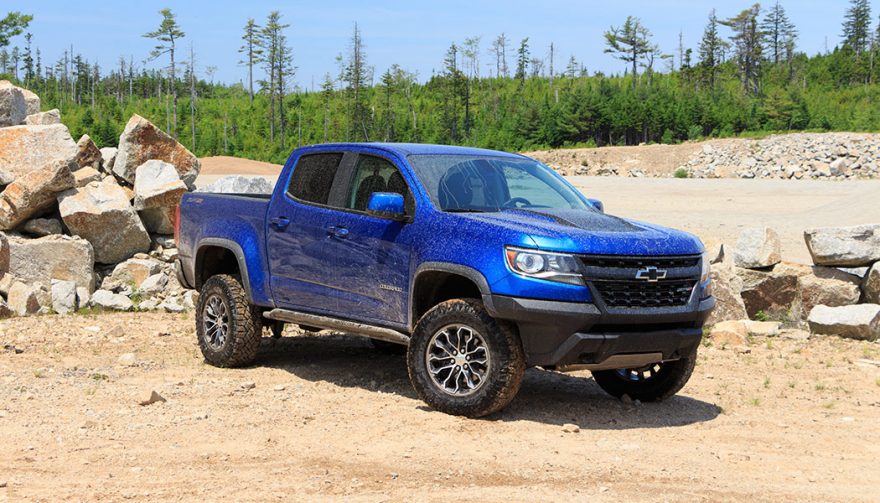
Splitting Power
You already know that all-wheel drive sends power to all four wheels, but it does so unevenly. Exactly how that works depends on the system. With four-wheel drive, it traditionally sends the same amount of power to all four wheels.
That means if you were to put a truck with four-wheel drive on a lift, each wheel would spin at the same, constant rate. That’s an advantage when you’re rolling over big obstacles, plowing through low-traction surfaces, and meeting other challenges of rugged trails.
The transfer case is the mechanical device that splits this power evenly. It’s essentially a set of gears, but the exact configuration changes from one vehicle to the next. While this setup is great for trail conditions, it’s not ideal for driving on the road in everyday conditions. Just try turning around on dry pavement with four-wheel drive engaged and you’ll learn it’s not good to leave on. The wheels should rotate at different speeds as you go through a turn, but four-wheel drive does the exact opposite.
Lock It Up
Another feature you can have on a four-wheel-drive vehicle is locking differentials. This is usually something reserved for the most hardcore trail machines.
Locking differentials are often called traction-adding differentials because they help with gaining and maintaining traction in difficult conditions.
The main function of lockers is to literally lock up the differential. The wheels then turn equally as power is sent to them. It keeps wheels with less traction from turning too quickly, digging them in and causing a problem.
Some lockers are automatic, so they engage when wheel slippage is detected. They also unlock when you’re going through turns. That eliminates the problem of cornering awkwardly. Others are selectable, meaning the driver engages them, usually using a switch. Older off-roaders have lockers you have to activate on the wheels, which can be fun when you’re stuck in deep mud.
A problem emerges with locked four-wheel-drive systems. If you’re driving on dry pavement and have four-wheel drive engaged, going through turns can result in wind up. Since the radius of any turn is different for the inside and outside wheels, and locked four-wheel drive means the wheels spin at the exact same rate, plus there’s nothing causing the wheels to slip, the axles, driveshaft, and other driveline components start to twist and bind. This is more of a problem at low speeds because when a vehicle is moving faster the tires slip on the road surface.
Before you think all-wheel-drive systems don’t have anything like a locker, they actually usually do. Both all-wheel drive and four-wheel drive can work with a limited-slip differential. These differentials send torque away from a wheel that’s just spinning uselessly. Sending it to one that has traction. In turns, they allow the wheels to spin at different rates. That’s why all-wheel-drive cars feel like they handle so tightly. Exactly how that happens varies from system to system, but overall they’re not as loud or feel nearly as harsh as lockers. That’s one big reason why limited-slip differentials are popular for all-wheel-drive cars. They’re more driver-friendly. The only problem is you don’t get as much traction from this setup versus a locker, but not everyone necessarily needs that performance.
The AWD vs 4WD Conclusion
There are quite a few similarities between four-wheel drive and all-wheel drive. Ultimately they all send power to four wheels. But you’ll even find differences between four-wheel-drive systems, as well as all-wheel-drive systems. If you remember nothing else, the big takeaway here is that all-wheel drive does well for on-road use and some light off-roading. Four-wheel drive, on the other hand, is really designed to tackle tough trail situations. While there are more technical differences, that in the end is in a nutshell what makes the two drive systems dissimilar.

